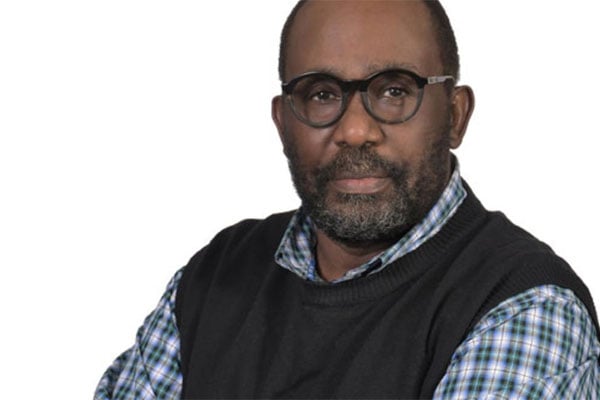Prime
Ebola and the making of ‘modern’ Uganda

Mr Charles Onyango-Obbo
What you need to know:
- Two decades later, an Ebola threat in Kampala is not the worst thing that could happen to many of its citizens.
On Monday, nine more Ebola cases were reported in Kampala, bringing the number of known infections to 14 over the previous two days.
The Ministry of Health also reported 90 cumulative Ebola cases on Monday, 28 cumulative deaths, 0 new deaths, and 1,830 contacts listed for follow-up.
The outbreak began in late September in Mubende and spread earlier this month to Kampala by a man who had come from Kassanda District to seek medical treatment and later died.
There are two types of viruses/diseases in Uganda. The ones that “start” in Kampala and big towns then go upcountry, like Covid-19. And those that start up in the country and come to the cities and towns – like Ebola.
How they travel and behave when they reach their new destinations is not coincidental. It’s influenced by national politics, economics, and various social and cultural dynamics.
Barring some black swan-level development, on the current trajectory, it is unlikely the deaths from the present Ebola outbreak will reach 60. In one of the first really big outbreaks in northern Uganda between October 2000 and January 2001, there were 173 deaths.
Most of the deaths were in Gulu. It also produced the first African global Ebola superstar, in the person of the charismatic Dr Matthew Lukwiya. Lukwiya was the supervisor of St. Mary’s Hospital Lacor in Gulu. He was at the forefront of the 2000/2001 Ebola fight, even getting down to the point of helping clean the floor of the waste of Ebola patients to inspire the nurses. Lukwiya died from the disease on December 5, 2000. His praises are still being sung.
One of the remarkable aspects of that outbreak was that it hardly came to Kampala. A patient presented at Mulago Hospital with suspected Ebola symptoms, and Kampala was in turmoil. In the Monitor newsroom, JIK was ordered, and door handles were wiped down. Face masks were not yet mainstream by then; otherwise, folks would have won three. The patient died, and if my memory serves me well, no other casualty was reported in the capital until WHO declared the outbreak over in February 2001.
If the present 14 infections had happened in Kampala in 2000, the city would have been half-deserted. The consciousness of Kampala and its response to risk has changed, and quite dramatically too. Like the rest of Uganda, Kampala then was at the tail end of the worst of the HIV/Aids pandemic. But even then, it wasn’t as severely affected as the truck-stop towns along the northern corridor like Naluwerere and Lukaya.
It was a honeymoon period for the ruling NRM and President Yoweri Museveni in Kampala and central Uganda more broadly. There were still parts of the region where people were kissing the ground on which Museveni walked.
The threat of violence was external, concentrated at that point where Joseph Kony’s Lord’s Resistance Army war was raging, with the Khartoum government backing them, occasionally bombing targets inside Uganda near the border.
The growth and infrastructure development spurt that started in the early 1990s hadn’t taken off everywhere. Partly closed off by the war and a road that was rutted in parts, it wasn’t easy for an Ebola patient to move out of Gulu and come to Kampala to seek treatment. By the time they got to Kampala, they would have died. In that sense, politics and economics insulated Kampala from the 2000 outbreak.
Today, the country is several times more open, and you have a smooth tarmac drive from all key towns, barring the ones in Karamoja, to Kampala. So the chap in Kassanda thinks nothing of travelling to Kampala to seek treatment.
But even if they could have travelled to Kampala then, they had fewer incentives to do so. With Lacor at its peak, it offered nearly everything you could get in Mulago or other Kampala hospitals. Many towns upcountry had a passable hospital. Today, they don’t. Public medical facilities are worse off than they were 20 years ago.
There has been a political shift in Kampala, where private health is several times better. Kampala’s threats and the violence it endures are no longer external. It is internal, unleashed by the security forces in the crackdown, first, against Dr Kizza Besigye and the Reform Agenda/Forum for Democratic Change base since 2001, and in the last election cycle in a ferocious way, against Bobi Wine and his National Unity Platform.
After two decades, extreme violence has been normalised in Kampala. On the other hand, places like Gulu are less tormented. Two decades later, an Ebola threat in Kampala is not the worst thing that could happen to many of its citizens. So you have both greater violence and more economic progress, living in contradiction and shaping our fear, or lack thereof, of diseases.
Mr Onyango-Obbo is a journalist, writer and curator of the “Wall of Great Africans”. Twitter@cobbo3





